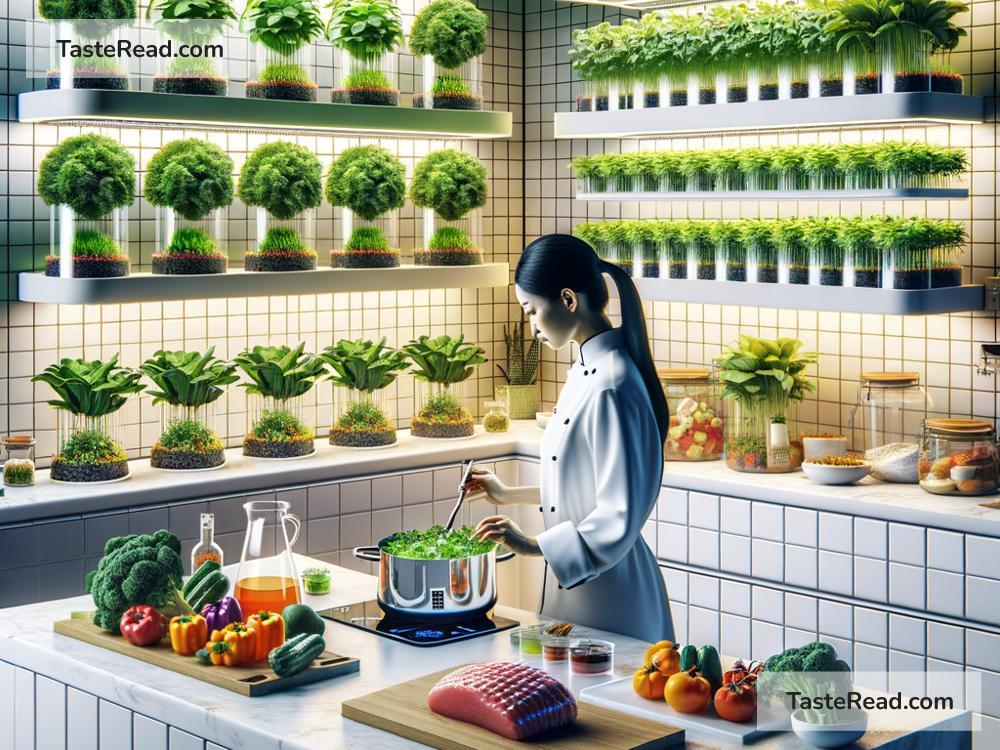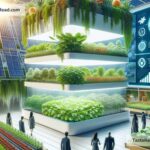The Future of Food: Regenerative Systems for a Healthier World
Food is central to our lives. It’s how we connect with family, celebrate culture, and fuel our bodies. But behind the scenes, the systems that grow, harvest, and deliver our food are under immense pressure. Climate change, soil depletion, and unsustainable practices are putting the planet—and our future—at risk. To address these challenges, many experts agree that regenerative systemic models might hold the key to transforming the food industry. In simple terms, these models rethink how we grow food and interact with the environment to ensure a healthier planet and better livelihoods for everyone.
What Does the Future of Food Look Like?
The future of food will need to meet growing demands as the global population continues to expand, with estimates reaching nearly 10 billion by 2050. Feeding this many people won’t be easy. Farms today often rely on methods that degrade the soil, waste water, harm biodiversity, and emit greenhouse gases. In other words, the current system isn’t built to last.
The future of food must focus on more sustainable methods, better nutrition, and fairer systems for farmers and communities. The spotlight is on regenerative practices, which aim to heal ecosystems while producing food. These approaches offer hope for solving many of today’s problems.
What Are Regenerative Systemic Models?
Regenerative systemic models are ways of organizing food production that focus on renewal rather than depletion. They’re not just about growing crops or raising animals; they’re about creating a balanced system where land, water, animals, and humans work together harmoniously.
Imagine you’re taking care of a garden. Instead of using chemicals to boost plant growth in the short term, you focus on enriching the soil naturally—by composting, rotating crops, or planting cover crops. The soil becomes healthier over time, which means the plants you grow will thrive without harming the environment. This idea can be expanded to larger farming systems and food systems as a whole.
Key Principles of Regenerative Food Production
Regenerative systemic models rely on several key principles:
-
Healthy Soil: Regenerative farming focuses on improving soil health through methods like no-till farming, crop rotation, and composting. Healthy soil stores more carbon, retains water better, and produces more nutritious food.
-
Biodiversity: On regenerative farms, a variety of plants and animals coexist, promoting natural ecosystems. Diverse landscapes are better at supporting pollinators like bees, preventing pests, and ensuring resilience to changing weather patterns.
-
Water Conservation: Regenerative farms use smarter irrigation systems, preserve wetlands, and replenish groundwater, ensuring that water resources are managed thoughtfully.
-
Carbon Sequestration: Plants in regenerative systems pull carbon from the atmosphere and store it in the soil, helping to fight climate change. This process not only reduces greenhouse gases but also makes ecosystems more productive.
-
Fair Practices for Farmers: Regenerative models also value fairness. Farmers are given support to transition to sustainable methods and are paid fairly for producing high-quality food.
Innovations Shaping the Future of Food
The exciting part about regenerative food systems is that innovation is playing a big role. Advances in technology, research, and collaboration are making these practices more accessible and effective.
Examples include:
-
Precision Agriculture: Drones, sensors, and AI are helping farmers monitor their fields, water usage, and soil health. This allows them to make targeted changes that improve crop yields while reducing resource waste.
-
Lab-Grown Foods: Scientists are developing alternative proteins like lab-grown meat and plant-based dairy, which require fewer resources than raising livestock.
-
Vertical Farming: Growing food in stacked layers indoors has great potential for urban areas, offering fresh produce year-round without the need for large land spaces.
-
Community Efforts: Local food systems, like farmer markets and food cooperatives, are gaining traction. These initiatives strengthen connections between consumers and producers and reduce the environmental costs of transporting food long distances.
-
Regenerative Seafood: Aquaculture systems are being designed to mimic natural ecosystems, reducing harm to water while producing sustainable fish and seaweed.
Why Regenerative Models Matter
Regenerative food systems aren’t just about preventing harm—they’re about creating benefits. Healthy soil can grow more nutritious food, support wildlife, and reduce greenhouse gas emissions. Clean water can lead to thriving communities. Strong local food networks can build resilience against global disruptions.
In simpler terms, regenerative models aim to turn farming from something that harms the planet into something that heals it. The focus isn’t just on sustainability (maintaining what we have); it’s on regeneration—making things better for the future.
What Can You Do to Support the Future of Food?
As everyday consumers, we can help drive change. Some ways to get involved include:
-
Choose Local and Seasonal Foods: Supporting local farmers reduces transport emissions and encourages community-based food systems.
-
Try Regenerative Brands: Some brands prioritize regenerative practices, so look for products that promote soil health, fair wages, and biodiversity.
-
Eat More Plants: While meat can be part of regenerative systems, cutting back on meat consumption (especially from industrial farms) can reduce environmental impact.
-
Reduce Food Waste: Using leftovers, sharing surplus food, or composting can prevent food from ending up in landfills and promote healthier waste cycles.
-
Learn and Advocate: Understanding regenerative practices and sharing what you learn can inspire others to get involved.
Conclusion
The future of food is about more than just feeding people—it’s about reshaping systems to nurture life on Earth. Regenerative systemic models offer a way forward, creating solutions that work for both people and the planet. By healing the soil, conserving water, and supporting biodiversity, these practices can transform our food systems for generations to come. Whether through innovation, education, or small personal choices, we all have a role to play in creating a healthier, more sustainable food future.

